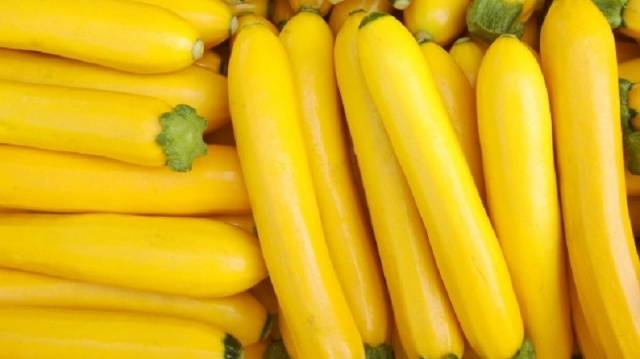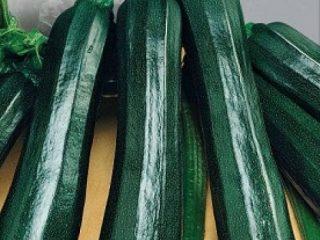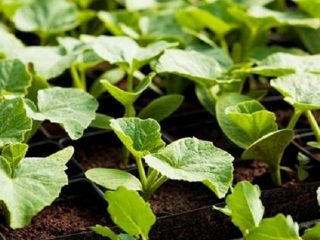Content
Zucchini is a rather unique plant. Some consider it a very simple, unpretentious crop with an ordinary taste. Sometimes you can hear enthusiastic exclamations from dieters. And many people know this vegetable as an original decoration and a useful component of culinary masterpieces. There are a large variety of picturesque and elegant varieties of zucchini, in other words, decorative.
Growing zucchini is carried out according to certain general rules of agricultural technology, but some varieties have their own characteristics. This applies to the planting scheme, nuances in care and treatment, and use in cooking. Ornamental squash is a member of the pumpkin family with very lush foliage and attractive bright flowers. This is how varieties that have unusual parameters began to be called. The shapes and sizes of fruits are so diverse that it is quite problematic to list everything. Every season new species appear with improved properties and appearance. Lovers of aesthetics have received decorative varieties that are in no way inferior to ordinary zucchini in their nutritional value.But they have a huge advantage - beautiful fruits, which, after ripening, are often dried and stored for a long time. Decorative zucchini combines both beauty and benefit.
Decorative varieties include zucchini with:
- unusual coloring;
- original shape of the fruit.
The first type includes yellow-fruited, striped, dark green and other varieties with a color different from the classic one.
Yellow-fruited open ground decorations
Among the green foliage of garden crops, bright yellow fruits look very good. Beautiful clear shape, bright color, a large number of fruits on the branch - all this looks like a flower bed. Yellow-fruited decorative zucchini serves not only as a nutritious and tasty addition to homemade dishes, but also as a worthy table decoration.
"Yellowfruited"
Early ripe, high-yielding decorative zucchini. The fruits are ready for consumption within 60 days after germination. Bush plant with brightly colored fruits. Zucchini berries weigh about 1 kg, have thin, smooth skin and juicy pulp. A special feature of the fruits of the decorative variety “Zheltoplodny” is the large amount of carotene they contain. This makes the variety very useful. They are planted both by seedlings and by sowing in the ground. Loves comfortable temperature conditions - 24-34 ° C and fertile soil. The planting pattern is classic 60x60. Requires regular loosening.
"Golden Scallop"
Mid-season decorative variety. The fruits reach ripeness after 65 days. Original, with a lumpy surface and bright yellow color. The weight of one zucchini reaches two kilograms. The pulp is very tender and juicy, the fruits are suitable for fresh consumption. Refers to dietary products.The main advantages are excellent shelf life and transportability. Sow seeds in holes of 2-3 pieces. simultaneously, and thinned out in the phase of the first true leaf. There should be one plant left in the hole. Planting pattern 70x70. For seedlings, sowing is carried out earlier in April.
"Yellow Banana F1"
An early-ripening hybrid variety with a high degree of productivity. This decorative zucchini has a powerful bush without vines with beautiful lightened leaves. Smooth cylindrical fruits resemble bananas. The average weight of one is 0.6 kg, length 40 cm. Variety with:
- disease resistance;
- high fruit set;
- good transportability;
- attractive look.
It has dense and juicy pulp. Used in cooking and for preparing preparations.
Originality of shape and color
Some varieties of decorative zucchini amaze with their simultaneous elegance of appearance and variety of shape. For lovers, we can recommend zucchini
"F1 Festival"
Zucchini is super decorative. The fruits are unusually round in shape and have a bright striped color, a bit like a pumpkin. The diameter of each reaches 15 cm. The flesh is tender and sweet. A wonderful hybrid variety with a long shelf life. This indicator is very important, because storing zucchini for a long time is very problematic. “Festival F1” is preserved for 10 months without losing its attractiveness and taste.
There are two ways to grow a hybrid variety of decorative zucchini: seedlings and direct sowing in the ground. The plant must be mulched and watered regularly. Responds well to soil fertility.
"Pear-shaped"
The photo shows an early variety of zucchini, which, in addition to its nutritional value, can serve as a decorative decoration for a garden bed.The reason is the original fruits, reminiscent of a pear. The size of a pear-shaped zucchini at ripeness is about 20 cm, weight – up to 1.2 kg. We get a large, nutritious “pear” with dark orange pulp and a fragrant aroma. Pear-shaped zucchini has a huge advantage over other members of the family. Its fruits are stored for a long time. Pear-shaped zucchini is used in cooking and homemade preparations.
"Lagenaria"
Another name for the vegetable is Vietnamese zucchini. The scope of application is very wide. Unripe fruits (up to 60 cm long) are used in cooking. Overripe ones serve as raw materials for making dishes and boxes. Various products are woven from the long stems, and oil is extracted from the seeds. This decorative zucchini is also valued in medicine.
Lagenaria has its own characteristics:
- good stem growth - more than 15 m;
- long fruits – up to 1.5 m;
- large weight – up to 15 kg.
These parameters apply to ripe fruits. But the small unripe ones are very original and tasty. They have different shapes - in the form of a cylinder, a pear, a ball. It is recommended to grow zucchini in seedlings, otherwise in cool regions you may not wait until the fruits fully ripen. The growing season for lagenaria is 200 days. This is a big gap. Seeds are sown at the end of March in small containers for seedlings. It is better to germinate before sowing.
"Tangerine"
An early ripening decorative variety of tasty zucchini, named after the color of the fruit. Bright “tangerines” can be consumed 40 days after sowing the seeds. As soon as the fruits reach a size of 15 cm in diameter, they need to be picked. They are very tasty in their raw form, which is valued in nutrition. This decorative zucchini loves fertile soil, warmth and good light.Agricultural technology is no different from growing other ornamental zucchini.
"Turkish turban"
Mushroom-shaped pumpkin squash. An unusually beautiful multi-colored fruit with a nutty taste, a type of decorative pumpkin. In addition to its decorative appearance, it has another worthy advantage - unpretentiousness and practicality during the growth period. A long vine of a stem will decorate an arch, fence, fence and create an original composition with beautiful flowers, leaves and mushroom fruits. You can collect the fruits of decorative squash and pumpkin before frost. They are stored for a long time and serve as decoration for the home, gazebos, and gardens.
The variety is grown in sunny places with good soil. It is necessary to loosen and nourish the soil during the growth period of decorative zucchini. Plants are planted at a distance of at least 90-100 cm. Before sowing, the seeds are germinated and suitable ones are selected. Ripe fruits are dried and used for compositions.
"Zebra"
Early ripe, high-yielding, beautiful decorative zucchini. During the growth period, it decorates the garden bed; when it is ripe, it delights with delicious dishes. The pulp is juicy, the fruits are even and harmoniously colored. Can be consumed 40 days after planting. Main advantages:
- resistance to powdery mildew;
- keeping quality;
- transportability.
There are no special requirements during the growing period. The bush is very compact, which allows you to create the desired composition in the garden bed and in the greenhouse. Suitable for growing in open ground and greenhouses. The fruits gain weight up to 1.2 kg. Valued in dietetics for its excellent nutritional qualities and low calorie content.
"Two-Color Miracle"
A unique variety of decorative zucchini, bred by English breeders. Refers to climbing zucchini. The liana reaches up to 10 m in length. The fruits are very tasty.When planting, you should consider the size of the plant that can be used to weave the arbor.
"The Amazing Giant"
Ultra-early ripening, with a large reserve of vitality. Climbing variety decorative zucchini. Lianas do not require formation. The fruits are large, reach a weight of 6-7 kg, and are stored for at least a year. The pulp is original orange in color and sweet. Tolerates cold, damp weather well without reducing yield.
Why choose decorative varieties
Some gardeners believe that vegetables should only be useful for preparing dishes and preparations. Connoisseurs of aesthetics are increasing their demands on the quality and appearance of varieties.
Ornamental zucchini is worth growing for several reasons:
- Beautiful. In ornamental plants, original fruits, leaves, and flowers are valued. One zucchini, wisely selected for its qualities, can feed, improve a garden area, and decorate an ordinary garden bed. The rapid growth of the plant makes it possible to use decorative zucchini for vertical gardening (climbing varieties) or for sowing in beautiful flowerpots (bush varieties). Such flowerpots are suitable for decorating a terrace, recreation area, path.
- Fun for the whole family. Even children will willingly agree to grow decorative zucchini. The unpretentiousness of the plants and the quick results attract kids to take care of small “pears”, “stripes” or “mushrooms”.
- Design Value. Varieties of decorative zucchini that can be dried have a long shelf life. Therefore, throughout the season until the new harvest, they serve to embody creative ideas. In addition to decorating and making compositions, many people make crafts from dried decorative zucchini - flowerpots, candlesticks, boxes.
To properly preserve the fruits, you should pick them only after they have dried on the bush. It is necessary to leave a short stalk length. Dry decorative zucchini for a long time in a ventilated area. For convenience, it is better to hang them. Be sure to sort out the fruits. All rotten, moldy or very soft ones are removed, leaving the healthiest and strongest ones.





















